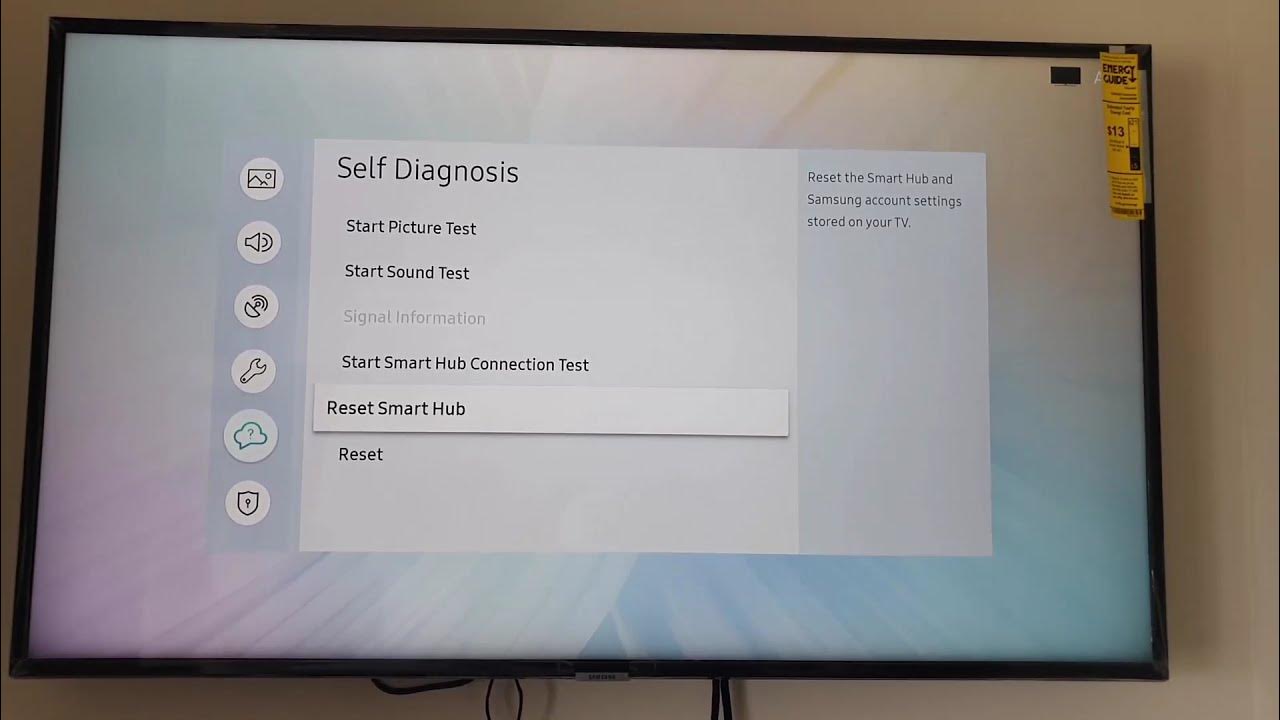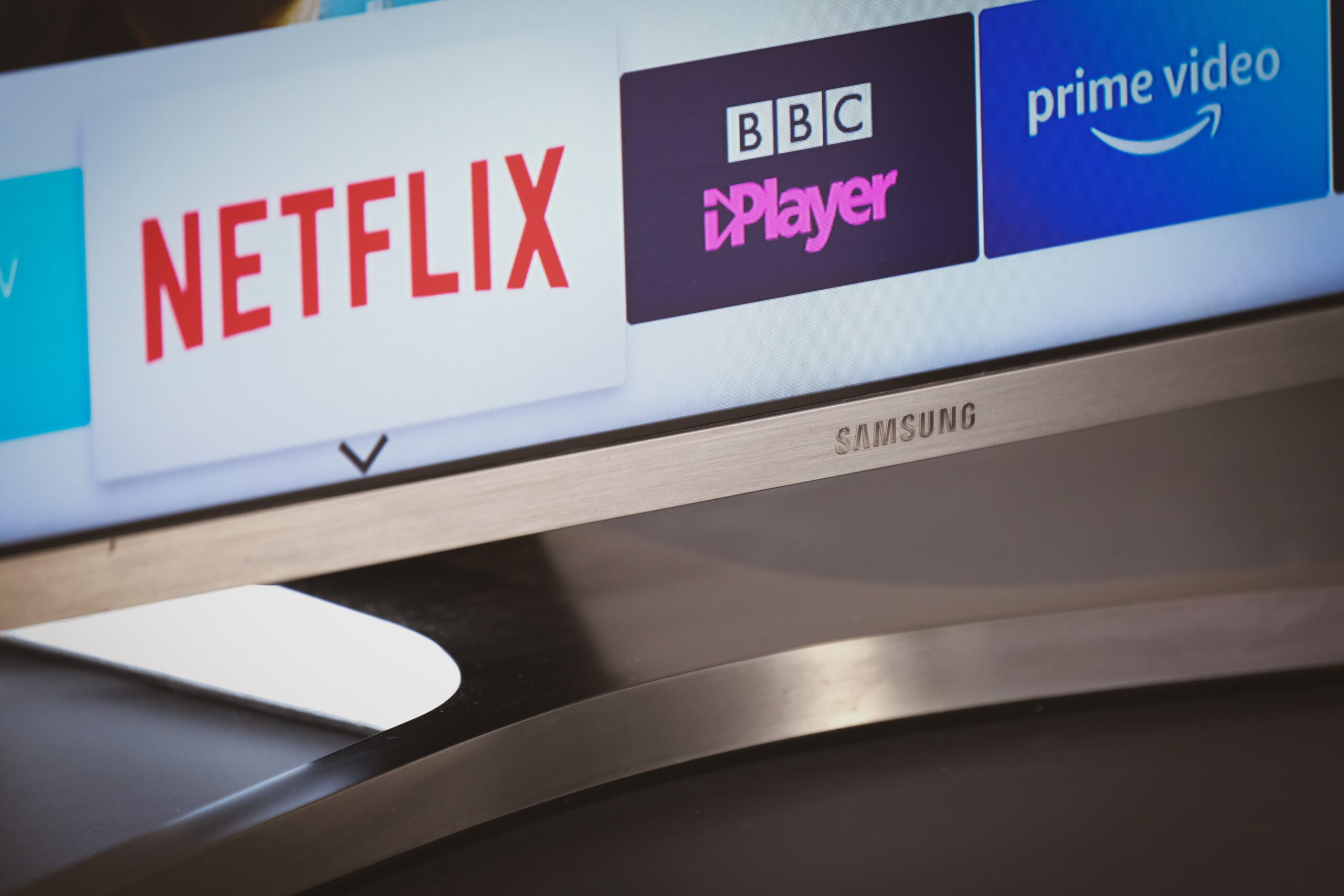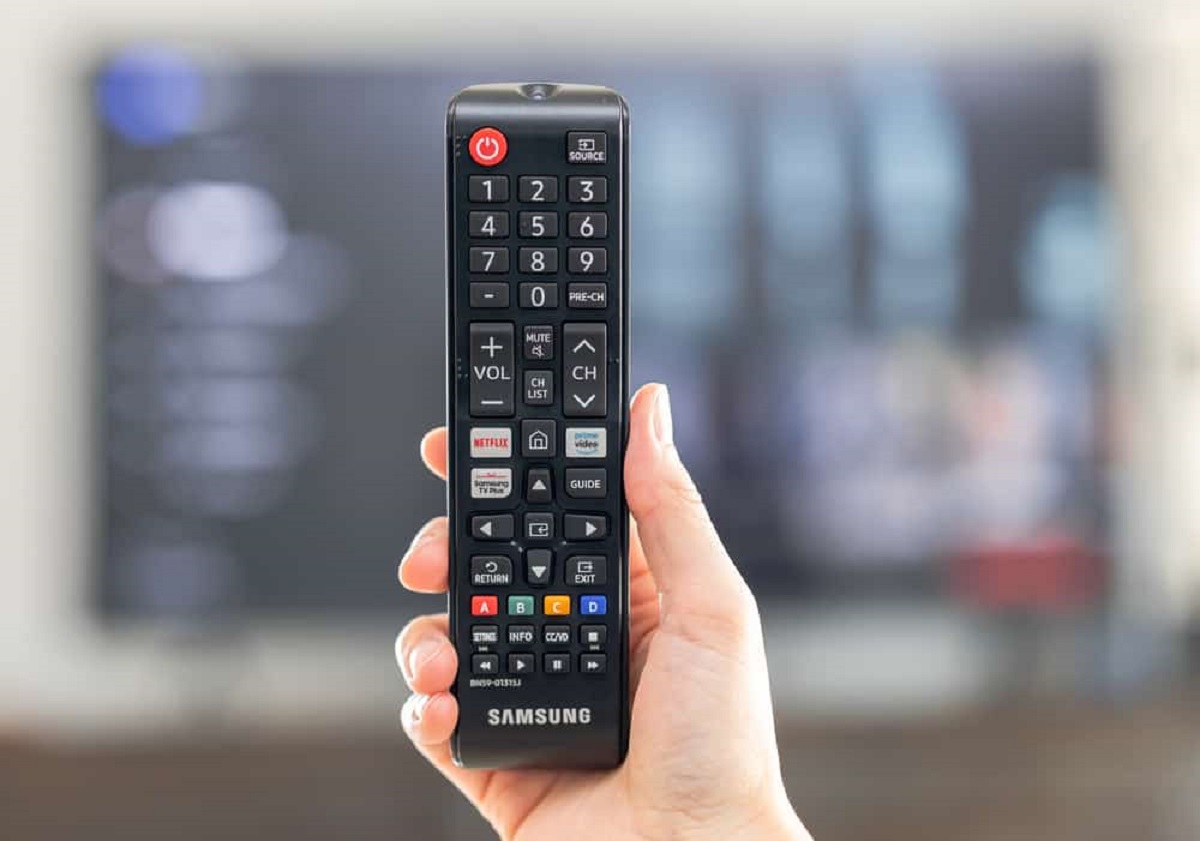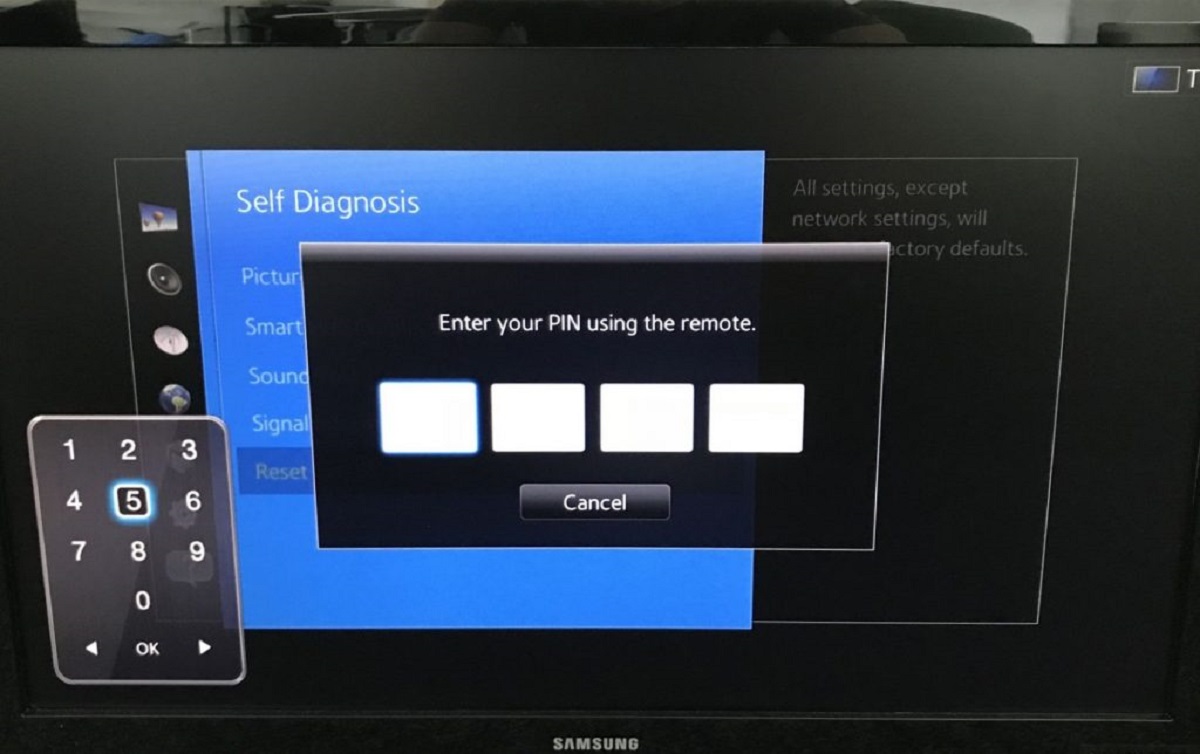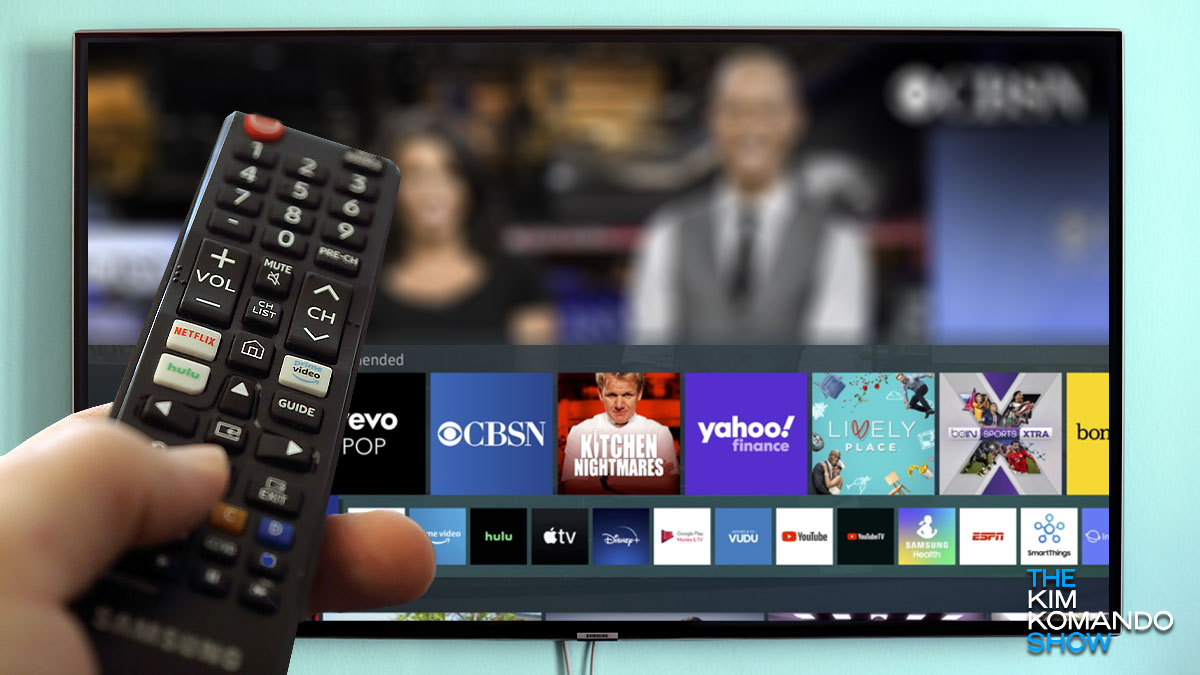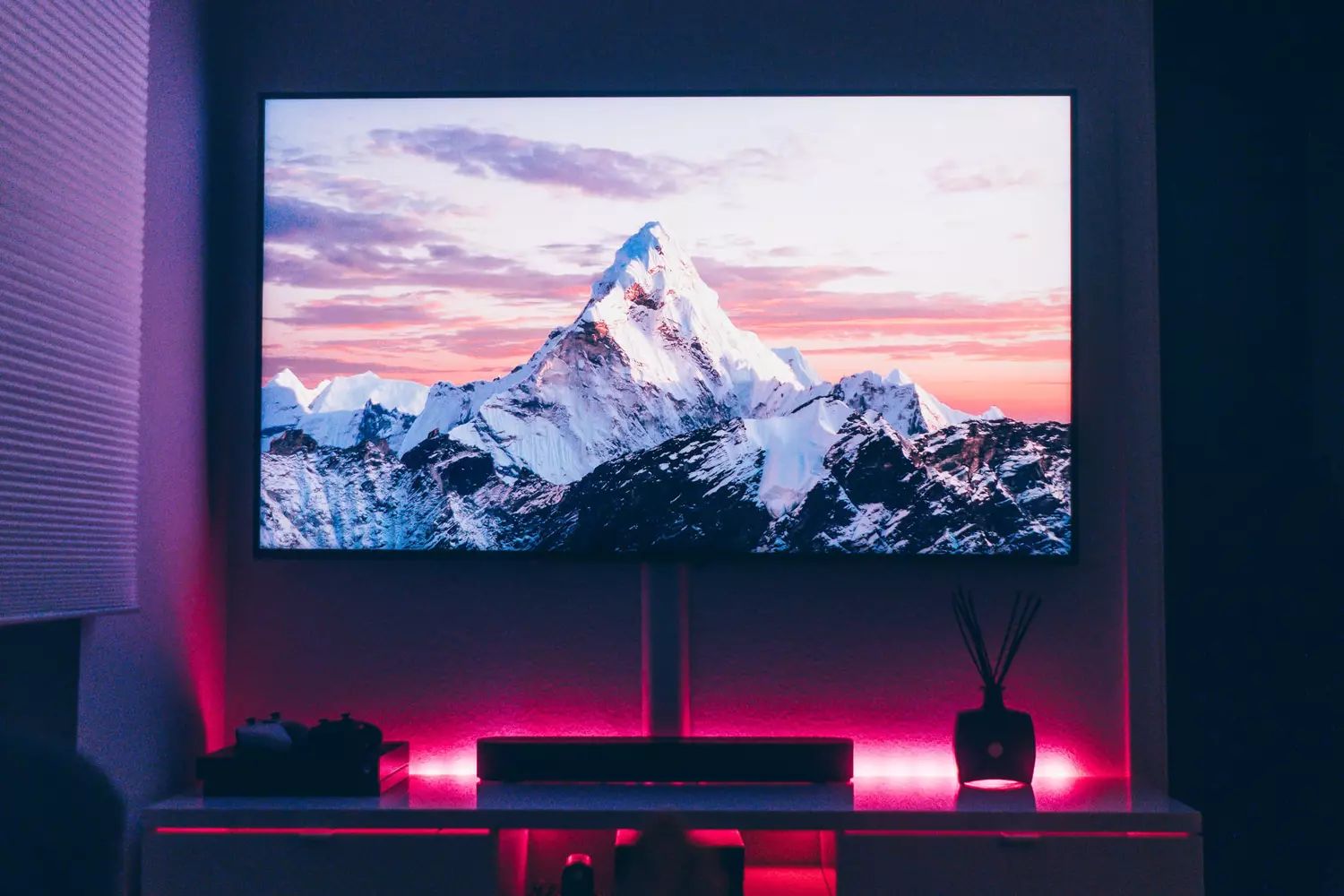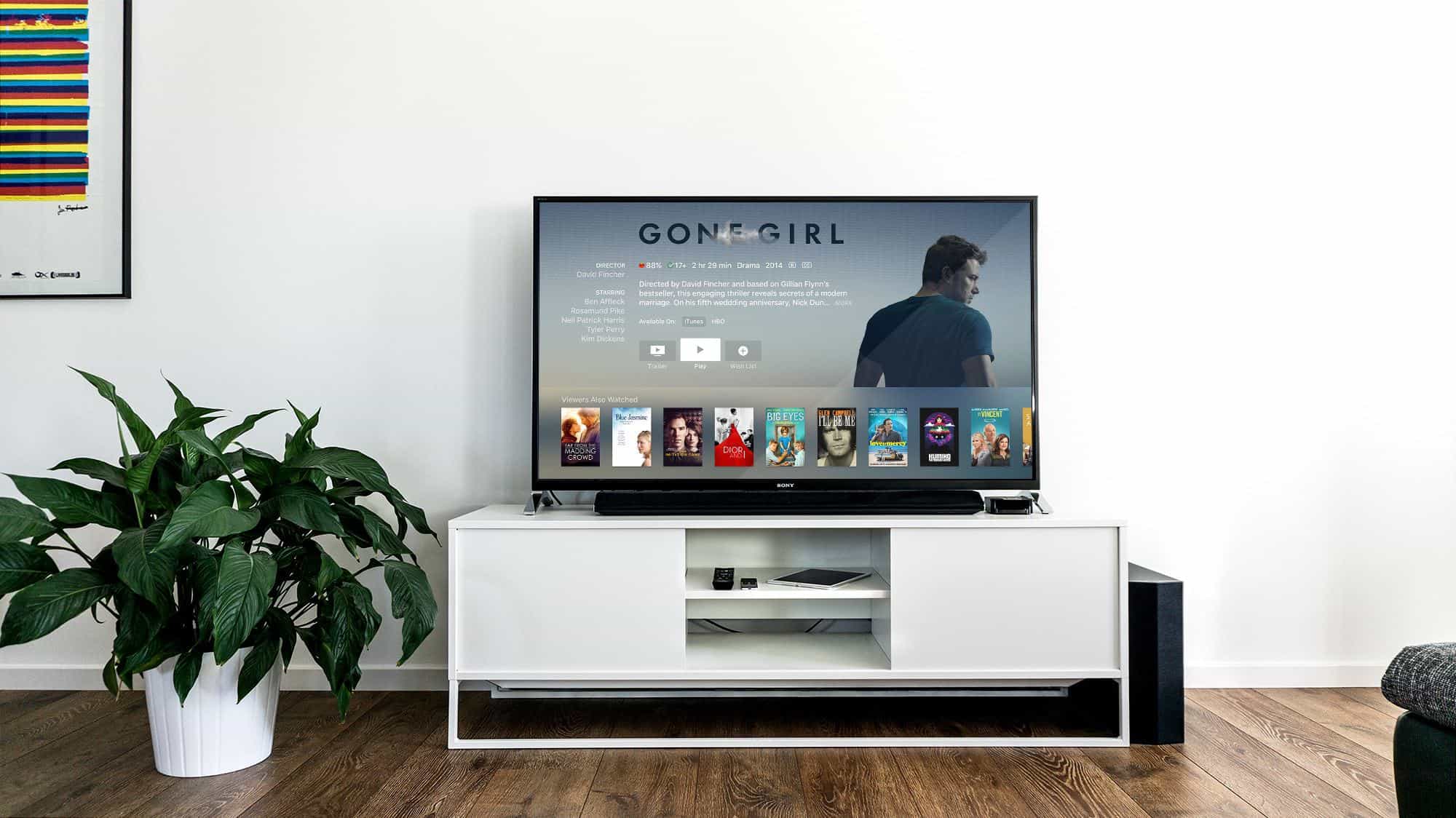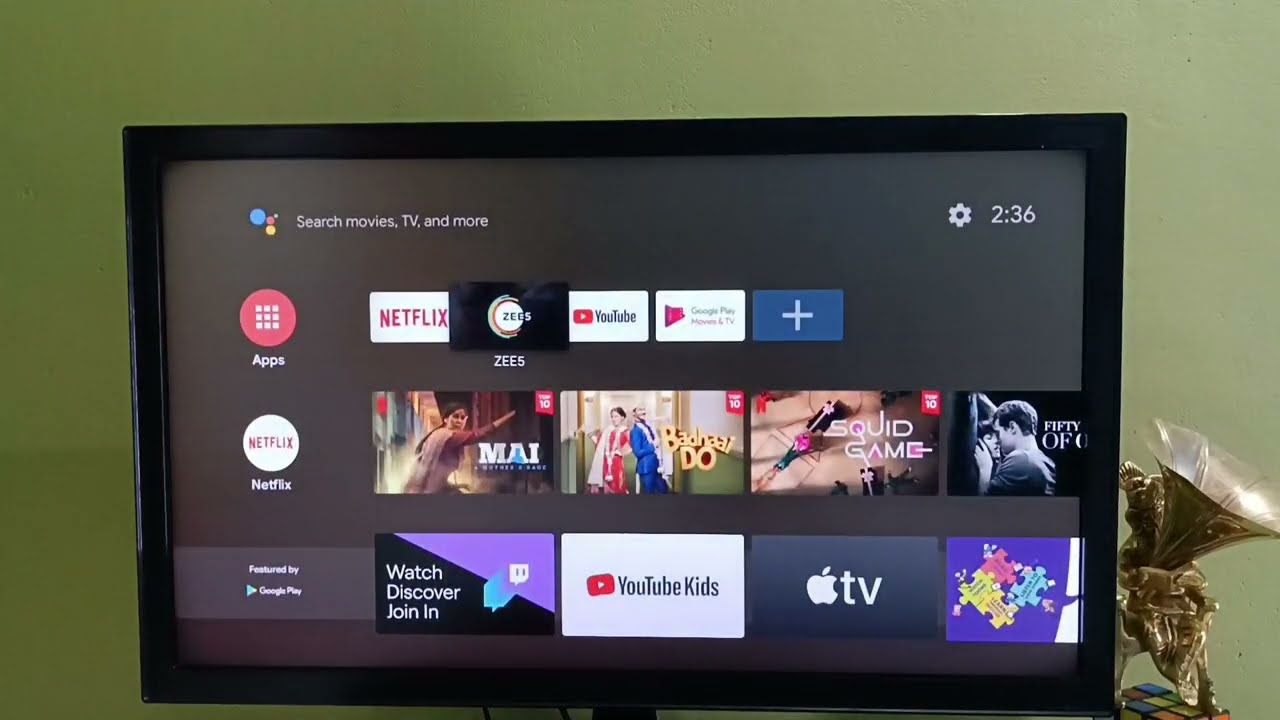Introduction
A Samsung Smart TV is a modern entertainment device that offers a multitude of features and functionalities. From streaming your favorite shows and movies to browsing the internet and accessing various applications, these smart TVs have become an integral part of many households.
However, just like any electronic device, your Samsung Smart TV may run into issues or experience glitches over time. When this happens, resetting your TV can often be the solution to troubleshoot problems and restore its functionality. Resetting a Samsung Smart TV involves restoring the TV to its original factory settings, which can help resolve software-related issues, fix network connectivity problems, improve picture and sound quality, or simply provide a fresh start.
In this article, we will explore the reasons why you might need to reset your Samsung Smart TV and guide you through the various methods to perform a reset. Whether you’re encountering freezing issues, network connectivity problems, or simply want to start afresh, a reset can often do the trick. So, let’s dive in and discover the different ways to reset your Samsung Smart TV.
Reasons to Reset a Samsung Smart TV
There can be several reasons why you might need to reset your Samsung Smart TV. Understanding these reasons can help you determine when a reset is necessary and how it can benefit you. Here are some common scenarios where resetting your TV can be beneficial:
- Software-related issues: Over time, your Smart TV’s software may encounter glitches or become corrupted, leading to various issues like freezing, random restarts, or apps not working properly. Performing a reset can help refresh the software, potentially resolving these issues.
- Network connectivity problems: If you’re experiencing connectivity issues with your Wi-Fi or wired network, resetting the TV’s network settings can often solve the problem. It can help clear any network-related configuration issues or conflicts that may be impacting your TV’s ability to connect to the internet.
- Poor picture or sound quality: Sometimes, your Smart TV’s picture or sound settings may get misconfigured, resulting in subpar audio or video performance. Resetting the picture and sound settings to their default values can help restore the optimal viewing and listening experience.
- Problems with Smart Hub: Smart Hub is the gateway to the various applications and services on your Samsung Smart TV. If you’re experiencing issues with launching apps, sluggish performance, or error messages within Smart Hub, resetting it can often resolve these issues and ensure smooth operation.
- Selling or giving away the TV: If you’re planning to sell or give away your Samsung Smart TV, performing a factory reset is essential. This ensures that your personal data, accounts, and preferences are completely wiped from the TV, protecting your privacy and allowing the new owner to set it up as if it were brand new.
Regardless of the specific reason, it’s important to note that performing a reset will erase any personal settings, saved preferences, and downloaded apps on your TV. Therefore, it’s advisable to take note of your personalized settings and reinstall apps after the reset if desired.
Steps to Reset a Samsung Smart TV
Resetting a Samsung Smart TV can be done through a soft reset or a hard reset, depending on the nature of the issue you’re facing. Here are the steps to perform each type of reset:
Soft Reset:
- Start by pressing the power button on the remote control to turn off the TV.
- Then, unplug the TV’s power cord from the power outlet or surge protector.
- Wait for at least 10-15 seconds to allow any residual power to drain from the TV.
- After the waiting period, plug the power cord back into the power outlet.
- Finally, use the remote control to turn on the TV. The soft reset is now complete.
Hard Reset:
Perform a hard reset only if you’ve tried the soft reset and it didn’t resolve the issue. Keep in mind that a hard reset will erase all your personal settings and data, returning the TV to its original factory settings.
- Start by pressing the Menu button on the remote control to open the TV’s menu.
- Navigate to the “Support” or “Settings” section using the arrow keys on the remote.
- Select “Self Diagnosis” or “Reset” depending on your TV model.
- Choose “Factory Reset” or “Delete All” to initiate the hard reset process.
- Follow the on-screen prompts carefully to confirm the reset and enter any required PIN or passcode.
- Once confirmed, the TV will begin the reset process, which may take a few minutes.
- After the reset is complete, the TV will restart, and you’ll need to set it up again as you did when it was first purchased.
Note: The exact steps and menu options may vary slightly depending on your specific Samsung Smart TV model. If you’re unsure, refer to the user manual or visit the Samsung support website for the correct instructions.
Additionally, if you only need to reset certain aspects of your TV’s settings, such as network settings, picture settings, or Smart Hub, you can usually find these options within the TV’s menu under the respective sections. Follow the on-screen instructions to reset the specific settings as needed.
Soft Reset
A soft reset is a simple and quick method to troubleshoot minor issues with your Samsung Smart TV. It involves power cycling the TV by turning it off, unplugging it, and then plugging it back in. This process can help resolve software glitches, temporary freezes, or other minor issues without erasing any personal data or settings. Here are the steps to perform a soft reset:
- Start by pressing the power button on your TV’s remote control to turn off the TV.
- Next, locate the power cord at the back of your TV and unplug it from the power outlet or surge protector.
- Wait for at least 10-15 seconds to allow any residual power to drain from the TV.
- After the waiting period, plug the power cord back into the power outlet.
- Finally, use the remote control to turn on the TV. You should see the startup screen, indicating that the soft reset was successful.
A soft reset can often help resolve temporary software issues, such as freezing or slow performance. It’s a good first step to try whenever you encounter minor glitches with your Samsung Smart TV.
However, it’s important to note that a soft reset won’t erase any of your personal settings, downloaded apps, or saved preferences. It simply restarts the TV and refreshes the software without any data loss. If you’re facing more serious issues or a soft reset doesn’t solve the problem, you may need to perform a hard reset, which restores the TV to its original factory settings.
Keep in mind that a soft reset is a general troubleshooting step and may not be applicable for all situations. If you’re unsure whether a soft reset is appropriate for your particular issue, consult the user manual or contact Samsung customer support for further assistance.
Hard Reset
A hard reset is a more thorough method to reset your Samsung Smart TV. It erases all personal settings, downloaded apps, and saved preferences, effectively restoring the TV to its original factory settings. This process can be useful if you’re experiencing persistent software issues, major malfunctions, or if you’re planning to sell or give away the TV. Here are the steps to perform a hard reset:
- Start by pressing the Menu button on your TV’s remote control to open the TV’s menu.
- Using the arrow keys, navigate to the “Support” or “Settings” section in the menu.
- Select “Self Diagnosis” or “Reset” depending on your specific TV model.
- Choose “Factory Reset” or “Delete All” to initiate the hard reset process.
- Follow the on-screen prompts carefully to confirm the reset and enter any required PIN or passcode.
- Once confirmed, the TV will begin the reset process, which may take a few minutes to complete.
- After the reset is complete, the TV will restart, and you’ll need to set it up again as you did when it was first purchased.
It’s important to note that a hard reset erases all personal data and settings, including Wi-Fi network configurations and installed apps. Therefore, it’s recommended to make note of any personalized settings or installed apps before proceeding with the hard reset.
If you’re facing specific issues with your TV, such as network connectivity problems or Smart Hub malfunctions, you may not need to perform a complete hard reset. Instead, you can explore the TV’s menu options to reset specific settings, such as network settings or Smart Hub settings, without erasing everything. Refer to the user manual or the Samsung support website for instructions specific to your TV model.
Performing a hard reset should only be done when necessary, as it completely wipes the TV’s customized settings and requires you to set it up again from scratch. It’s recommended to try a soft reset or explore other troubleshooting options before resorting to a hard reset.
Resetting Network Settings
If you’re experiencing issues with network connectivity on your Samsung Smart TV, such as difficulty connecting to Wi-Fi or slow internet speeds, resetting the network settings can often help resolve the problem. Resetting the network settings clears any saved Wi-Fi networks, DHCP settings, and other network configurations, allowing you to start fresh. Here’s how you can reset the network settings on your Samsung Smart TV:
- Press the Menu button on your TV’s remote control to open the TV’s menu.
- Navigate to the “Settings” or “Network” section using the arrow keys.
- Select “Network Settings” or a similar option, depending on your TV model.
- Choose the “Reset Network Settings” or “Reset” option.
- Follow the on-screen prompts to confirm the reset action.
- Once the network settings are reset, you’ll need to set up the network connection again by selecting your Wi-Fi network and entering the password (if applicable).
After the network settings reset, your Samsung Smart TV will forget all previously connected Wi-Fi networks and network-related configurations. This can often resolve network connectivity issues, especially if there were any misconfigured settings or conflicts that were causing the problem.
If resetting the network settings doesn’t solve the issue, you may also try power cycling your Wi-Fi router and modem, as well as ensuring that your internet service is functioning properly. Additionally, checking for any firmware updates for your TV and router can also help improve network performance and stability.
Remember to keep a note of your Wi-Fi network name and password before resetting the network settings, as you’ll need to re-enter this information during the setup process. Additionally, if you have any specific network settings or configurations, such as static IP addresses or custom DNS settings, you’ll need to reconfigure them after the network reset.
By resetting the network settings, you’re essentially starting fresh and giving your Samsung Smart TV a clean slate to establish a stable network connection. This can often alleviate network-related issues and ensure a smooth streaming and browsing experience on your TV.
Resetting Picture and Sound Settings
If you’re unhappy with the picture quality or sound output on your Samsung Smart TV, or if you’ve made adjustments that you no longer prefer, resetting the picture and sound settings can help restore the default settings and improve your viewing and listening experience. Here’s how you can reset the picture and sound settings on your Samsung Smart TV:
- Press the Menu button on your TV’s remote control to open the TV’s menu.
- Navigate to the “Settings” or “Picture & Sound” section using the arrow keys.
- Select “Picture Settings” or “Sound Settings” depending on what you want to reset.
- Look for the “Reset” or “Default” option within the respective settings menus.
- Choose the “Reset Picture Settings” or “Reset Sound Settings” option.
- Confirm the reset action by following the on-screen prompts.
By resetting the picture settings, your Samsung Smart TV will revert to the default picture mode, brightness, contrast, color temperature, and other settings. Similarly, resetting the sound settings will restore the default sound mode, equalizer settings, and other audio configurations. This can be particularly useful if your TV’s picture or sound has been adjusted in a way that you no longer find appealing, or if you’re facing any issues related to these settings.
After resetting the picture and sound settings, you have the option to further customize them according to your preferences. You can adjust the picture parameters like brightness, contrast, sharpness, and color settings, or fine-tune the audio settings such as bass, treble, and surround sound options. Experimenting with these settings can help you achieve the best visual and audio experience for your viewing pleasure.
It’s worth noting that resetting the picture and sound settings doesn’t erase any other personalized settings or data on your Samsung Smart TV. It solely affects the specific picture and sound settings that you choose to reset. If you’re experiencing more serious issues with the picture or sound, such as distorted audio or a blank screen, it’s advisable to perform a soft reset or seek professional assistance.
Resetting the picture and sound settings on your Samsung Smart TV allows you to start fresh and find the optimal visual and audio settings that suit your preferences. It can enhance your overall viewing experience and ensure that you’re getting the best picture quality and sound output from your TV.
Resetting Smart Hub
If you’re encountering issues with the Smart Hub on your Samsung Smart TV, such as apps not launching properly, sluggish performance, or error messages, resetting the Smart Hub can often resolve these problems. Resetting the Smart Hub will restore it to its default settings, clearing any saved login credentials, privacy settings, and app configurations. Here’s how you can reset the Smart Hub on your Samsung Smart TV:
- Start by pressing the Menu button on your TV’s remote control to open the TV’s menu.
- Navigate to the “Settings” or “Smart Features” section using the arrow keys.
- Select “Smart Hub” or “Applications” depending on your TV model.
- Look for the “Reset Smart Hub” or “Reset Applications” option.
- Select the option to reset the Smart Hub.
- Confirm the reset action by following the on-screen prompts.
After the Smart Hub reset is complete, you’ll need to set it up again by accepting the terms of service, signing in with your Samsung account (if applicable), and re-downloading any previously installed apps. This process ensures that you have a fresh start with the Smart Hub and can help resolve issues related to app performance or configuration.
Resetting the Smart Hub can be particularly helpful if you’re experiencing problems with specific apps not functioning properly. It clears any caches or temporary data that may be causing conflicts or stability issues. Additionally, updating the firmware of your TV to the latest version can also help improve Smart Hub performance and resolve compatibility issues.
It’s important to note that resetting the Smart Hub doesn’t affect the overall TV settings, such as picture, sound, or network settings. It solely focuses on resetting the Smart Hub and the applications within it. If you’re facing more serious issues with the TV’s functionality or performance, you may need to perform a soft or hard reset, as discussed in earlier sections.
Resetting the Smart Hub allows you to start fresh and ensure that you have a smooth and reliable experience with the various applications and services available on your Samsung Smart TV. By doing so, you can enjoy seamless access to your favorite apps, streaming services, and other digital content on your TV.
Resetting the Smart TV to Factory Settings
In certain situations, you may need to perform a complete reset of your Samsung Smart TV by restoring it to factory settings. This process erases all personal data, settings, downloaded apps, and any customization you have made to the TV. Resetting to factory settings is a more drastic measure and should be done as a last resort when all other troubleshooting methods have failed or if you are planning to sell or give away the TV. Here’s how you can reset your Samsung Smart TV to factory settings:
- Access the TV’s menu by pressing the Menu button on the remote control.
- Navigate to the “Settings” or “System” section using the arrow keys.
- Select “Factory Reset” or “Reset TV” depending on your TV model.
- Enter your TV’s security PIN or passcode if prompted.
- Confirm the reset action by selecting “Yes” or “OK” when prompted.
- Wait for the TV to reset, which may take a few minutes.
- After the reset is complete, the TV will restart, and you’ll need to set it up again as if it were brand new.
Performing a factory reset wipes all personal data, including Wi-Fi network configurations, app logins, and any stored preferences. It essentially brings the TV back to the state it was in when you first purchased it. It’s crucial to note that factory resetting is irreversible, so ensure that you have a backup of any important data before proceeding.
Before resorting to a factory reset, it’s recommended to try other troubleshooting methods, such as soft resetting or resetting specific settings, as discussed in previous sections. Factory resetting should be considered as a last resort as it erases all personalization and preferences, and you’ll need to go through the initial setup process again.
If you’re planning to sell or give away your Samsung Smart TV, performing a factory reset is essential to protect your privacy. It ensures that all personal data, accounts, and preferences are completely wiped from the TV, allowing the new owner to set it up as if it were brand new.
Remember to consult your TV’s user manual or visit the Samsung support website for model-specific instructions and any additional precautions before performing a factory reset. It’s important to fully understand the implications and ensure that a factory reset is the appropriate step to resolve the issue you’re facing with your Samsung Smart TV.
Conclusion
Resetting a Samsung Smart TV can be a helpful troubleshooting step when you encounter issues with the device. Whether you’re facing software-related glitches, network connectivity problems, picture or sound quality issues, or Smart Hub malfunctions, resetting can often provide a solution. It allows you to start fresh, restore default settings, and resolve common problems that may arise with prolonged use.
Soft resetting the TV by power cycling it and performing a hard reset by restoring it to factory settings are two common methods for resetting a Samsung Smart TV. Soft resets are quick and simple, resolving minor software issues and bringing the TV back to a stable state. On the other hand, hard resets should be used sparingly and as a last resort, as they erase all personal settings and data.
In addition to the overall resets, you can also reset specific aspects of your TV, such as network settings, picture and sound settings, and the Smart Hub. These targeted resets can address particular issues without impacting the entire TV’s functionality.
Before performing any reset, it’s important to familiarize yourself with the specific steps for your Samsung Smart TV model. Consult the user manual or visit the Samsung support website for accurate instructions tailored to your TV.
Remember that resetting your Samsung Smart TV can be a powerful tool for troubleshooting, but it should always be undertaken with caution. Before resetting, take note of any personalized settings, saved preferences, and installed apps you want to retain. After the reset, you may need to set up the TV again, download apps, and reconfigure settings to suit your preferences.
By understanding when to reset your Samsung Smart TV and knowing the different methods available, you can effectively troubleshoot common issues and ensure a seamless and enjoyable entertainment experience. Resetting can often be the solution to get your TV functioning optimally and back to providing you with the best streaming, browsing, and viewing experience.







